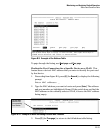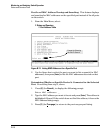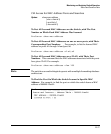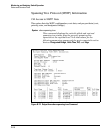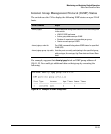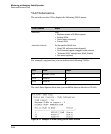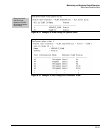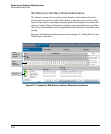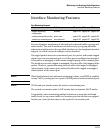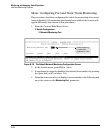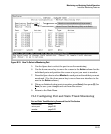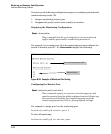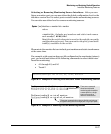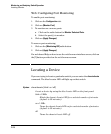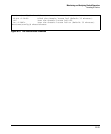
Monitoring and Analyzing Switch Operation
Interface Monitoring Features
Interface Monitoring Features
Port Monitoring Features
Feature Default Menu CLI Web
display monitoring
configuration
disabled page B-24 page B-26 page B-28
configure the monitor port(s) ports: none page B-24 page B-26 page B-28
selecting or removing ports none selected page B-24 page B-27 page B-28
You can designate monitoring of inbound and outbound traffic on ports and
static trunks. The switch monitors network activity by copying all traffic
inbound and outbound on the specified interfaces to the designated monitor-
ing port, to which a network analyzer can be attached.
If a tagged packet arrives on a monitored port, the packet will remain tagged
when it goes out a monitored port even if that port is configured as untagged.
If the packet is untagged, it will remain untagged going out the monitor port.
The monitor port state (tagged or untagged) does not affect the tagging of the
packet. However, egress mirroring does not reflect the tagged or untagged
characteristic to the mirror port, instead it reflects the tagged or untagged
characteristic of the mirror port.
Note When both inbound and outbound monitoring is done, and IGMP is enabled
on any VLAN, you may get two copies of IGMP packets on the monitored port.
Note VLANs and port trunks cannot be used as a monitoring port.
The switch can monitor static LACP trunks, but not dynamic LACP trunks.
It is possible, when monitoring multiple interfaces in networks with high
traffic levels, to copy more traffic to a monitor port than the link can support.
In this case, some packets may not be copied to the monitor port.
B-23



